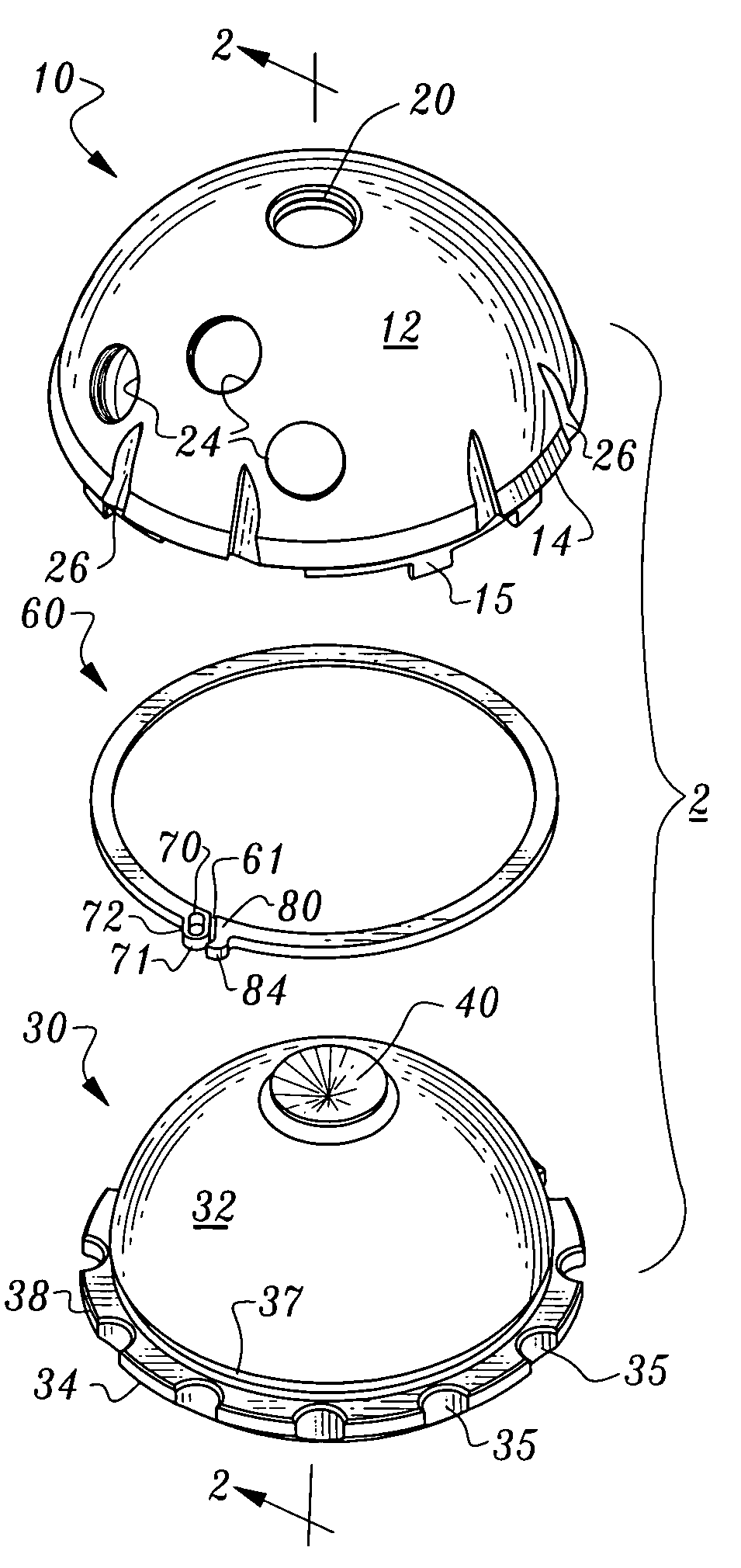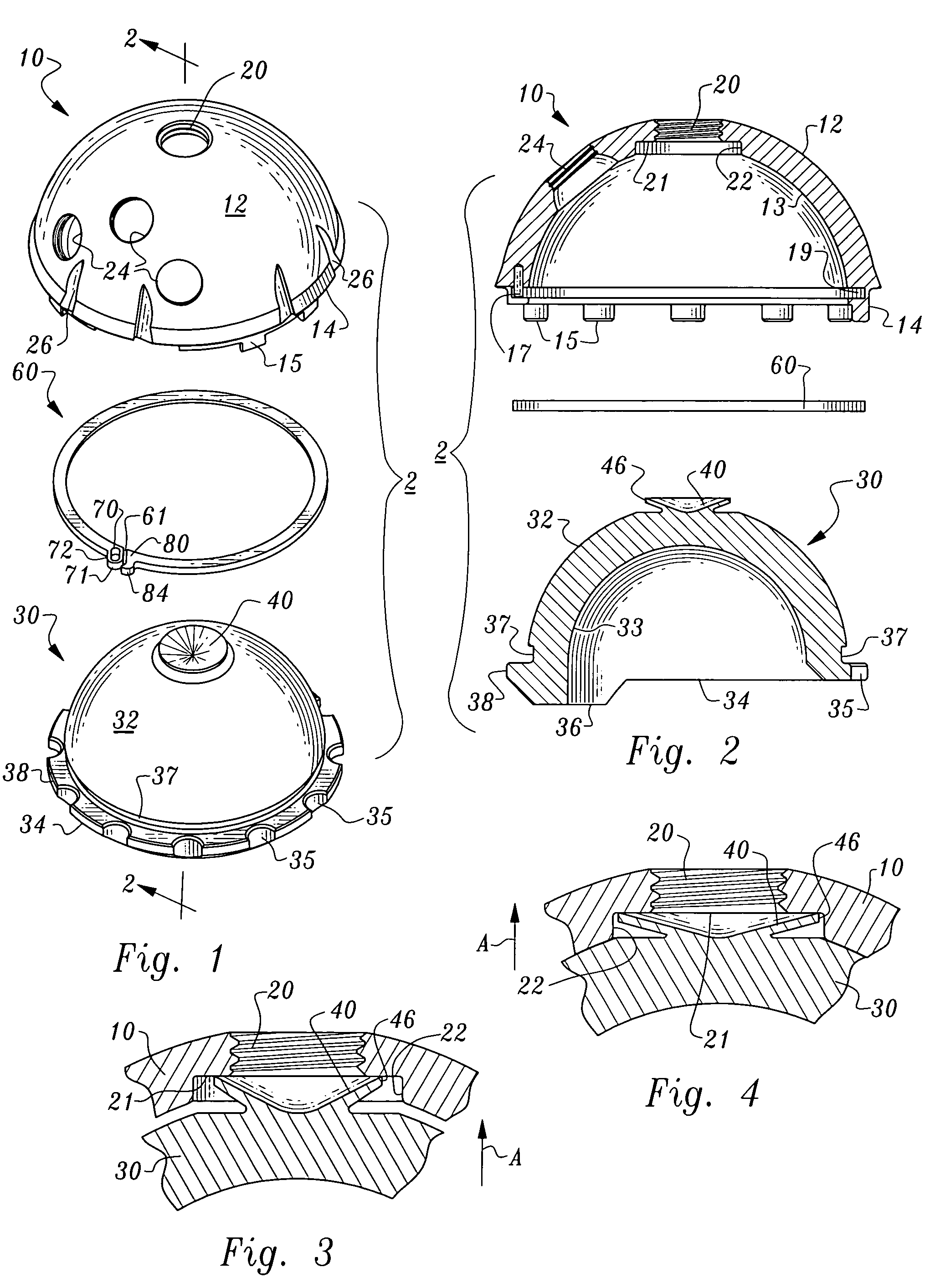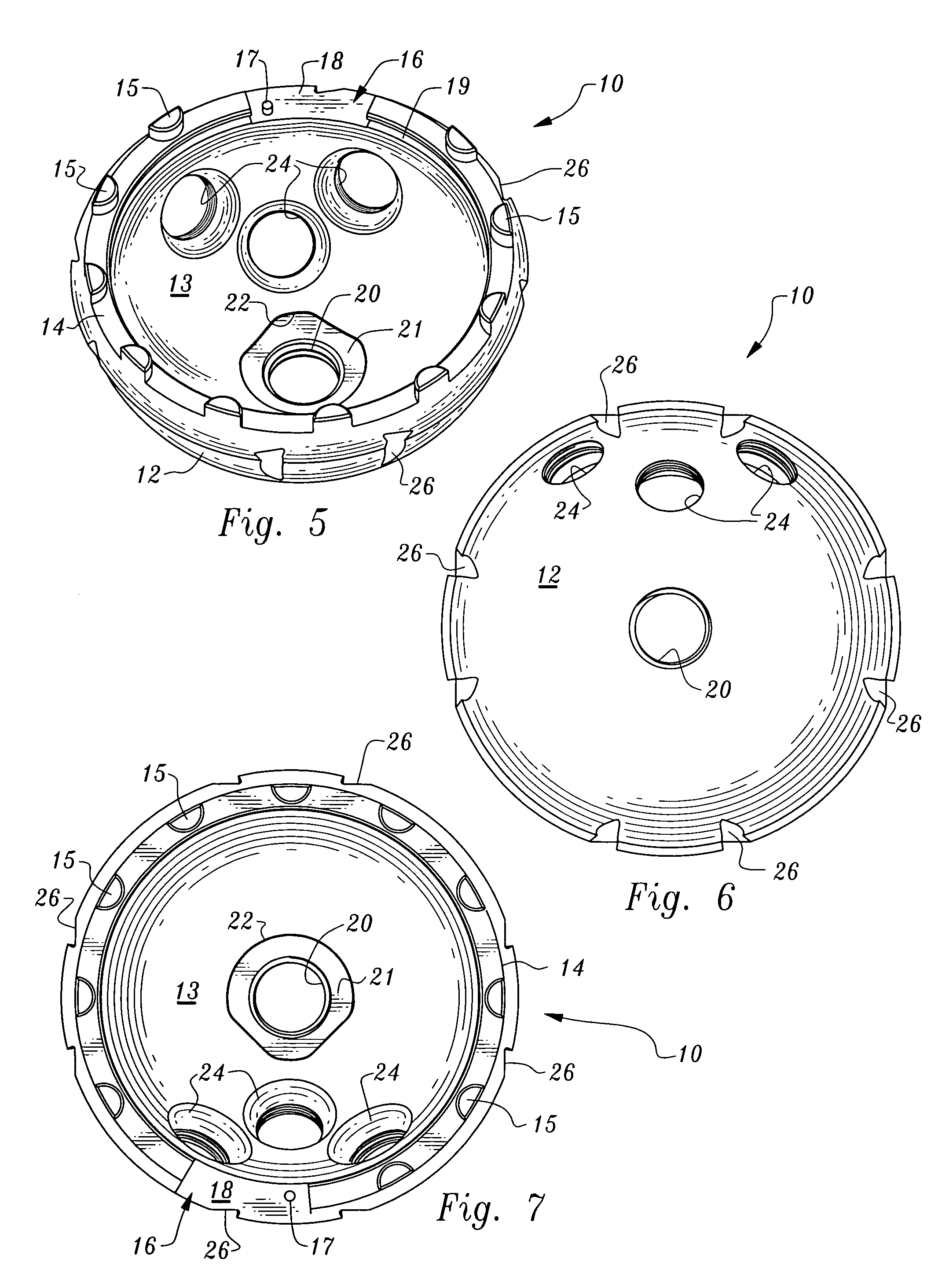Locking ring for liner of acetabular cup
a technology of locking rings and acetabular cups, which is applied in the field of acetabular cups and locking rings, can solve the problems of increasing the possibility of failure of artificial hip joints, difficult, if not impossible, to remove locking rings, and inability to optimally form, so as to facilitate the insertion, easy to remove or expand, and easy to inser
- Summary
- Abstract
- Description
- Claims
- Application Information
AI Technical Summary
Benefits of technology
Problems solved by technology
Method used
Image
Examples
Embodiment Construction
[0034]Referring to the drawings, wherein like reference numerals represent like parts throughout the various drawing figures, reference numeral 10 is directed to an acetabular cup (FIG. 1) adapted to receive a liner 30 therein for a portion of an artificial hip joint assembly 2 coupled to a hip bone. A locking ring 60 is provided to secure the liner 30 within the acetabular cup 10. With this artificial hip joint assembly 2 (FIGS. 1 and 2) a top bore 20 within the acetabular cup 10 is sealed by a top cone 40 of the liner 30 when the liner 30 is secured within the acetabular cup 10 by the locking ring 60. The locking ring 60 is easily positioned to hold the liner 30 within the acetabular cup 10 and easily enlarged to allow removal of the liner 30 from the acetabular cup 10.
[0035]In essence, and with particular reference to FIGS. 1 and 2, basic details of the artificial hip joint assembly 2 are described. The acetabular cup 10 is a generally hemispherical rigid structure having an exte...
PUM
 Login to View More
Login to View More Abstract
Description
Claims
Application Information
 Login to View More
Login to View More - R&D
- Intellectual Property
- Life Sciences
- Materials
- Tech Scout
- Unparalleled Data Quality
- Higher Quality Content
- 60% Fewer Hallucinations
Browse by: Latest US Patents, China's latest patents, Technical Efficacy Thesaurus, Application Domain, Technology Topic, Popular Technical Reports.
© 2025 PatSnap. All rights reserved.Legal|Privacy policy|Modern Slavery Act Transparency Statement|Sitemap|About US| Contact US: help@patsnap.com



